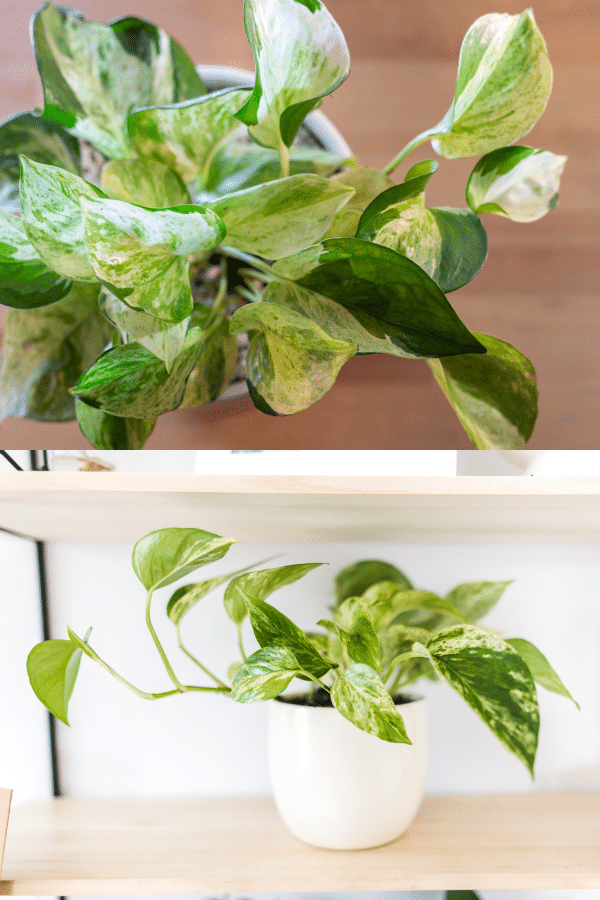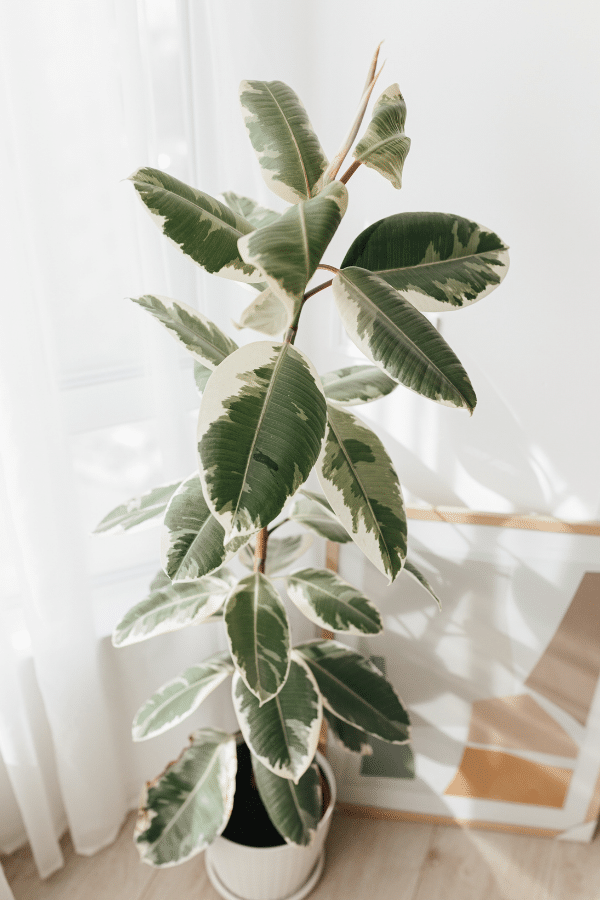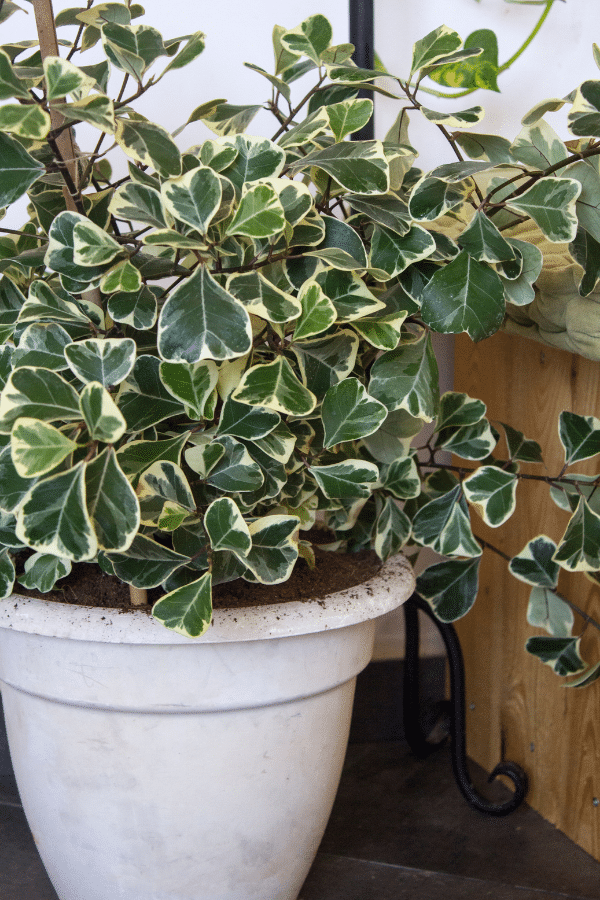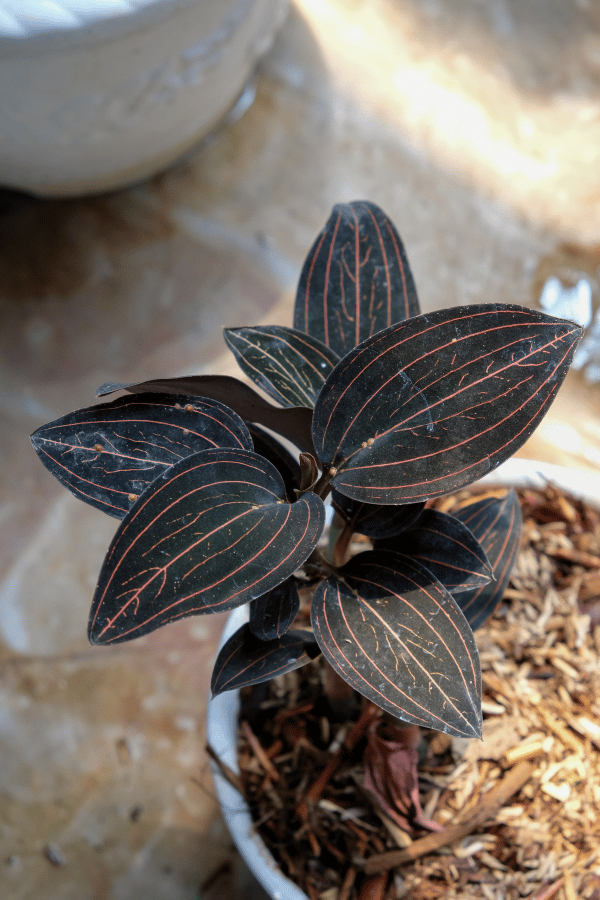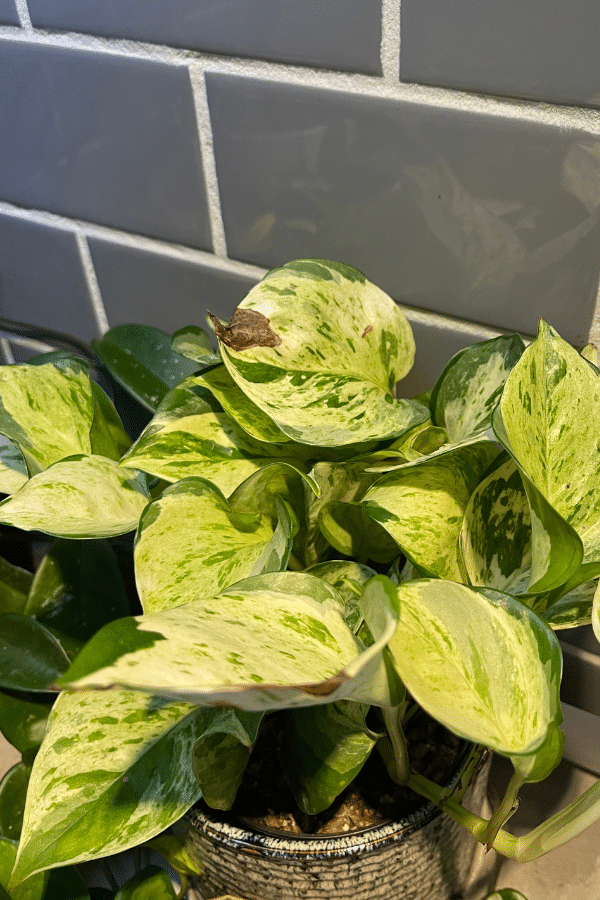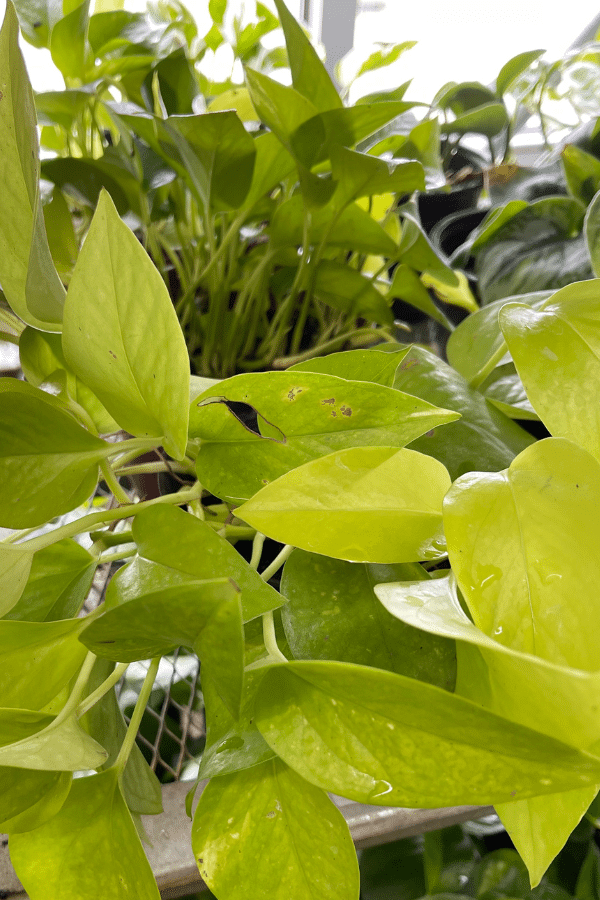Alocasia Regal Shield
Scientific Name: Alocasia Regal Shield
Common Name: Upright Elephant Ears
Alocasia Regal Shield care is low-maintenance although it can grow quite tall very quickly. Regal Shield Alocasia is good for people who have enough space for this plant to grow tall and wide, a corner or an open wall with bright sunlight will be best for this Alocasia plant.
To give this Regal Shield plant the best care, it requires loamy and acidic soil, allowing the top inch of soil to dry between waterings, bright indirect sunlight, and ideal temperatures ranging from 68-77F.
Quick Care Overview
| Common Name | Elephant Ear |
| Scientific Name | Alocasia Regal Shield |
| Family | Araceae |
| Origin | Hybrid Cultivar developed in Florida |
| Growth Rate | Medium to fast |
| Identification | Deep black/green leaves on stalk-like petioles |
| Height | Up to 5 feet tall |
| Soil | Loamy, rich, acidic soil that drains well |
| Water | Allow top inch to dry before rewatering |
| Temperature | 65-86F |
| Sunlight | Bright indirect light |
| Toxic to Cats & Dogs | Yes |
| Toxic to Humans | Yes |
| Pests | Aphids, mealybugs, scale, spider mites, thrips |
| Diseases | Powdery mildew, sooty mold, bacterial leaf spot, leaf blight, phyllosticta leaf spot, root rot |
Below we will dive deep into this Alocasia Regal Shield care guide.
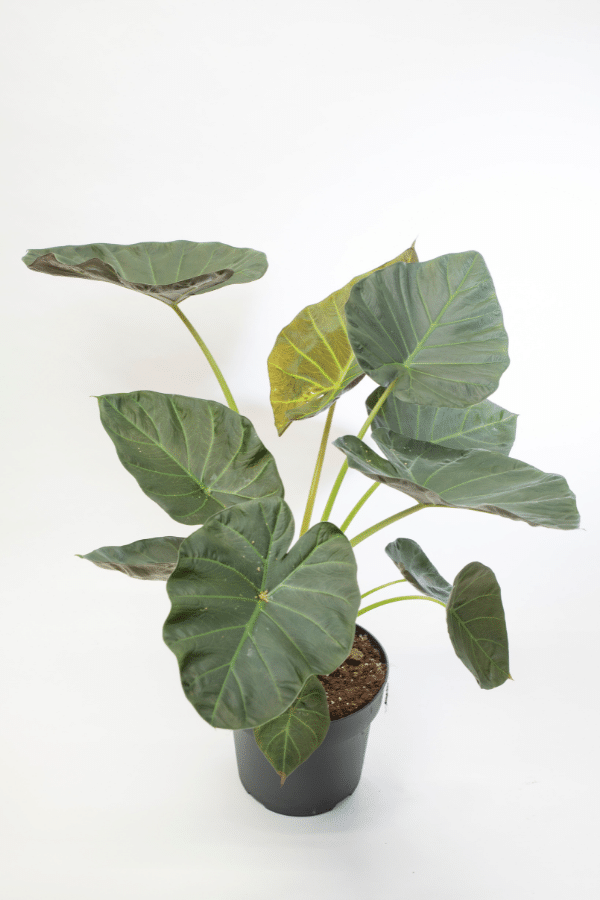
Alocasia Regal Shield History
Alocasia Regal Shield is a hybrid cultivar, being a cross between Alocasia Odora and Alocasia Reginula. Commonly called the Elephant Ear, this Alocasia was developed in Florida and makes a stunning houseplant or addition to the outdoor garden when grown under proper conditions. This plant almost has a magical aesthetic with its black velvety heart-shaped foliage and has air purifying qualities.
Alocasia Regal Shield Identification
This Alocasia presents with deep blackened green leaves on erect stalk-like petioles that may grow to become up to 20 inches long. Like many Alocasias, Regal Shield has standard heart-shaped leaves with ruffled edges and red undersides.
Alocasia Regal Shield Growth Facts
Alocasia Regal Shield is a large houseplant that may grow ceiling-high in only a few short years. While this plant may not suit compact spaces, it will make a great display plant for a patio or large living area.
How Big Does an Alocasia Regal Shield Get?
This plant may grow beyond 5 feet tall and has a wide spread due to its large foliage.
Alocasia Regal Shield Care
Alocasia Regal Shield is drought-tolerant and heat-tolerant but is highly sensitive to cold temperatures. As long as you can provide this plant with high humidity, good soil, and bright light, this elephant ear is extremely low-maintenance and easy to care for.
Searching for a new houseplant?
Take our houseplant quiz to see what your next plant should be based on the room it’s in, the specific lighting the room receives, if you want it on the floor or on the table, and much more!
Alocasia Regal Shield Soil
Alocasia Regal Shield is a heavy feeder and will require a loamy, rich, acidic soil with ample drainage. A standard potting mix with additions of perlite will work for this plant. However, a better growing medium would be a recipe of a 2:1 ratio of coco coir to fir bark and perlite. Additional organic matter may be added, such as compost or worm castings, at about 10% to give some extra nutrients. As this plant is a very heavy feeder, the soil should be refreshed every 2-3 years.
Alocasia Regal Shield Fertilizer
The best Alocasia Regal Shield care will need regular feeding throughout the growing season to support its growth. A monthly feeding from a diluted balanced liquid fertilizer will suit this plant nicely. Ensure that you follow all label instructions, as too much fertilizer may cause chemical burn. Do not feed your Alocasia during the winter. Feeding may be halted mid-fall.
Alocasia Regal Shield Watering
This plant likes to remain consistently moist but not oversaturated with water. Allow the top one inch of soil to dry completely before rewatering. This plant is sensitive to chemicals in tap water, and rainwater or distilled water is preferred. Watering should be reduced in winter. An Alocasia that is receiving too much water will have droopy leaves. An underwatered Alocasia will have wilting leaves.
Alocasia Regal Shield Light Requirements
This plant prefers bright, indirect light up to 85%, such as from a west or east-facing window. Do not allow your plant to sit in direct sunlight, as this can cause severe damage due to sun scorching. You should rotate the container of this plant regularly. As this plant grows towards the light quickly, pivoting the container will allow consistent growth and beautiful foliage. If your Alocasia is receiving insufficient light, its foliage will dull.
Alocasia Regal Shield Temperature & Humidity
Being a tropical plant, Regal Shield Alocasia likes it hot and humid. While able to withstand temperatures between 65 to 86 degrees Fahrenheit, between 68 to 77 degrees Fahrenheit is ideal. You should never allow your plant to reach a temperature below 60 degrees Fahrenheit, as this may cause permanent damage. Regal Shield likes to grow in high humidity; between 60-80% is best but should never be below 40% humidity. Utilizing a humidifier, pebble tray, or frequent misting of the leaves is suggested.
Repotting Alocasia Regal Shield
When potting, it is essential to select a heavy container with ample room for the roots to breathe, as this plant can quickly become top-heavy. Select a container 1-2 inches larger than the previous pot and ensure that it has ample drainage holes. Repotting should be done every two years.
Alocasia Regal Shield Maintenance & Pruning
Pruning should be done in the late winter to early spring. Using sterilized shears, remove damaged, discolored, or diseased leaves. Foliage may also benefit from dusting to maintain shine.
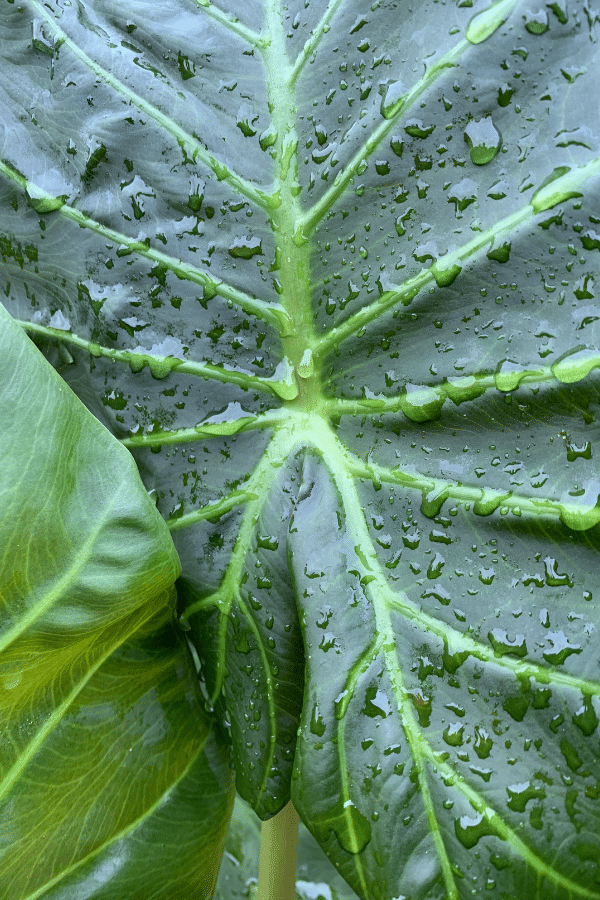
Alocasia Regal Shield Propagation
Propagation of Alocasia Regal Shield is easy through root division. This Alocasia is known to have many offshoots growing from the mother plant, which may be separated and replanted into their own container. Propagation should be done in the spring or summer during active growth. To propagate, remove the root ball of the mother plant and shake loose some of the soil. Next, separate some of the clumps gently using your hands. Finally, plant the clumps in their own container, refresh the soil, water thoroughly and place them in indirect light.
Alocasia Regal Shield Toxicity
Due to its calcium oxalate crystal content, this plant is considered toxic to humans and pets. Always wash hands after handling this plant.
Toxicity to Humans
This plant is considered toxic to humans. In addition, ingestion may cause a range of GI issues or irritation of the mouth.
Toxicity to Cats & Dogs
Alocasia Regal Shield is considered toxic to pets and should never be ingested. If you suspect your pet has ingested any portion of this plant, contact your veterinarian or animal poison control immediately.
Alocasia Regal Shield Problems
Alocasia Regal Shield Leaves Turning Yellow
Yellowing of the foliage may be due to overfertilizing, lack of drainage, overwatering, or chemicals from tap water. Use rain water or distilled water and provide soil that drains well.
Alocasia Regal Shield Leaves Turning Brown
Brown spots on the foliage are likely indicative of bacterial or fungal disease. Affected foliage should be removed, and watering should be reduced. Ensure that you do not get the foliage wet when watering. Alternatively, crisped brown edges may be due to a lack of humidity.
Alocasia Regal Shield Diseases
Several bacterial and fungal diseases may affect Alocasia Regal Shield, including powdery mildew, sooty mold, bacterial leaf spot, leaf blight, root rot, or phyllosticta leaf spot. Ensure that your plant has ample drainage and is not sitting in excess water within the drainage tray. Upon disease identification, remove affected roots and foliage and repot into fresh soil. Fungicides may be used to treat the disease. Ensure that you follow all label instructions.
Alocasia Regal Shield Pests
This Alocasia is susceptible to several pest issues. Aphids, mealybugs, scale, spider mites, and thrips may become a nuisance for this elephant ear. Upon identifying an infestation, isolate your plant, and treat it with insecticidal soap, following all label instructions.
FAQ
Can Regal Shield Alocasia Take Full Sun?
Alocasia Regal Shield needs bright indirect sunlight. Direct or full sun will cause the foliage to burn.
When Should I Repot My Regal Shield?
Alocasia Regal Shields need to be repotted every two years to provide fresh, aerated soil to the roots.

